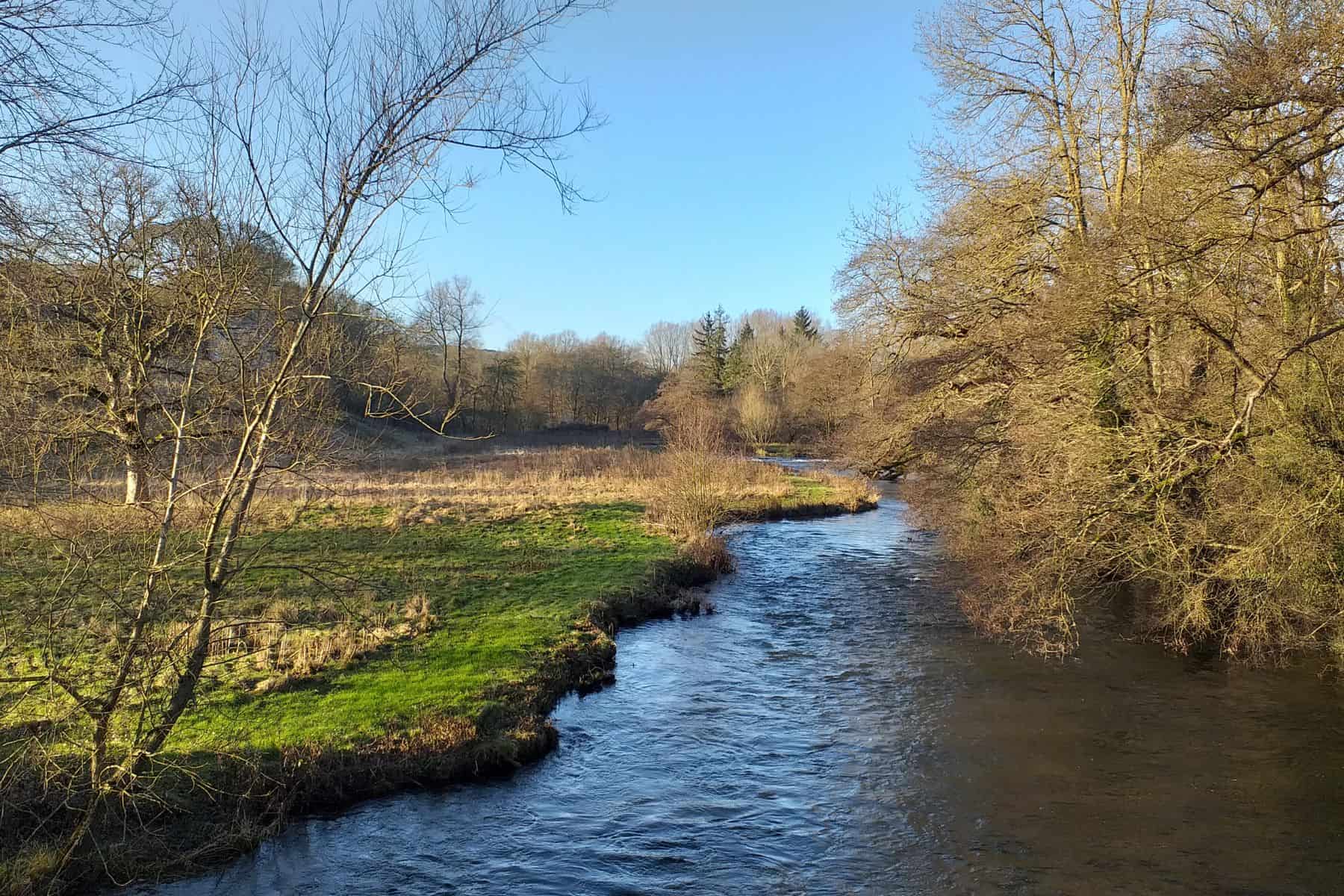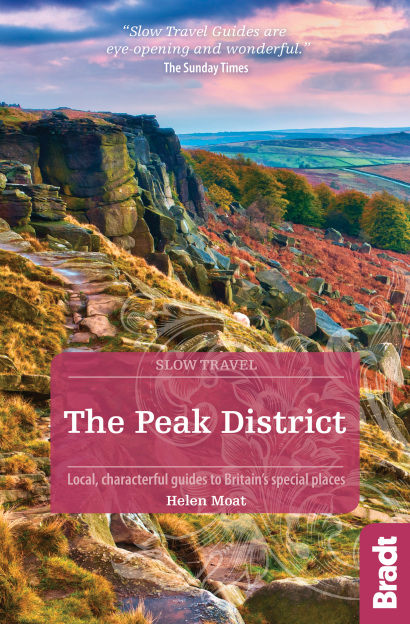Haddon Hall Chapel has more than a few skeletons in its closet. And on its walls.
In this article, Helen Moat – author of our Slow Travel guide to the Peak District – explores one of Derbyshire’s most beautiful chapels.
Inside Haddon Hall Chapel
Tucked in a corner of the courtyard at Haddon is the hall’s chapel. It takes a few seconds for the eyes to adjust to the diffused light in this ancient place of worship, dating back to the 12th century in places, and even longer to take in everything this small space has to offer.
The colourful east window dates back to 1427, with a finely detailed and intricately carved alabaster reredos of the crucifixion beneath it. In the nave, there’s a touching alabaster effigy of a child in peaceful repose: nine year-old Robert Charles John Manners, deeply mourned by his mother Violet.
All around, the rough walls are covered in splendid 15th century wall paintings, busy with leaf and flower patterns, but also of religious figures and scenes: a resplendent St Christopher; St Nicholas blessing the passengers on board a small sailing vessel; three children, also being blessed – rather bizarrely in a tub; a forest hunting scene and, most curious of all, a rather disturbing sketch of three skeletons. Gill Shimwell, Haddon Hall guide (and friend) explained the story behind the skeletons to me.
- Recommended reading: how to walk from Grindleford to Hathersage

The skeletons
Sections of the walls of Haddon Hall’s chapel were whitewashed over, as not all the paintings were scriptural. On one wall, all that’s left are three skeletons. The story of the skeletons is a memento mori, instructing the medieval lords and privileged aristocracy ‘look after your peasants and treat them well, because underneath all those fine clothes, you are just men and women who are going to die.’
The story goes that three kings were riding through the forest when they came to a silent clearing with no birdsong. No matter how much the kings cut and slashed and spurred their horses, the animals wouldn’t move. So the kings got off their horses and walked in. And there they drew their swords, hacking away to see if they could find anything. Three skeletons, at first kneeling in the grass, jumped up and towered above them with a great rattling of bones. Out of their cavernous, empty ribs came voices that boomed and rustled and creaked and said:
“As you are now, so once were we. As we are now, so you will be.”
The three kings ran away, but that night they were killed in their beds in the town where they were staying. Centuries later, in the early 20th century, as the duke and duchess pulled away the whitewash, the kings crumbled with the wash, while the skeletons remained. And so it is today.
If you have more time to explore the Peak District, check out Buxton, the Bath of the Midlands.
More information
For more information, see our Slow Travel guide to the Peak District:
